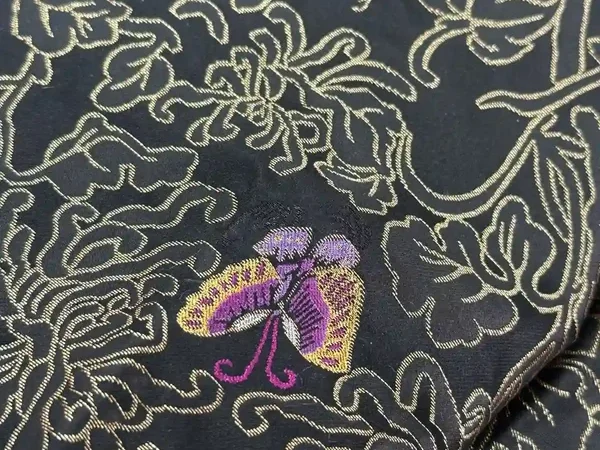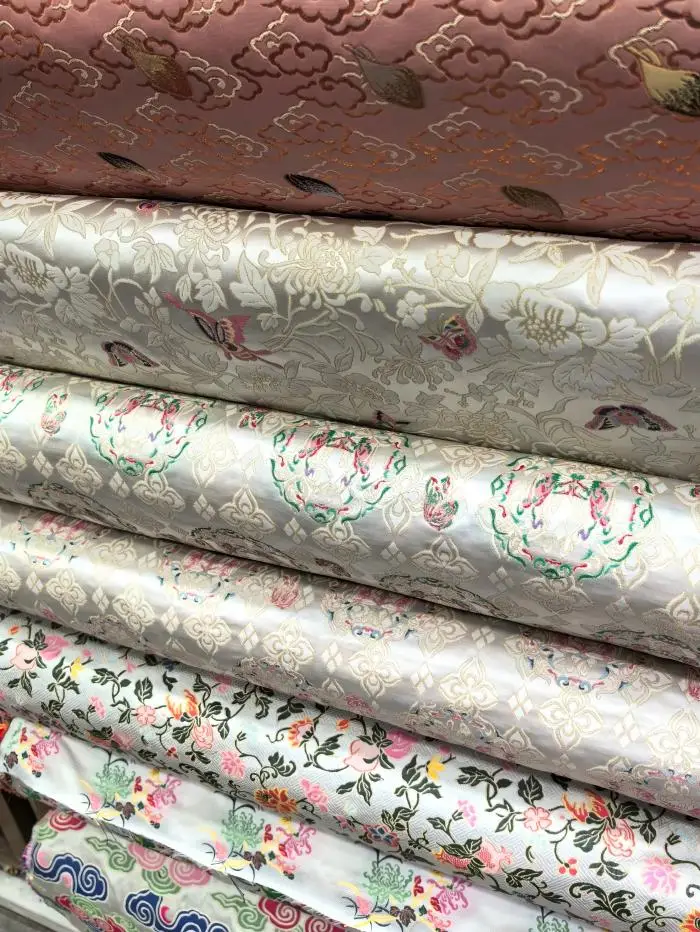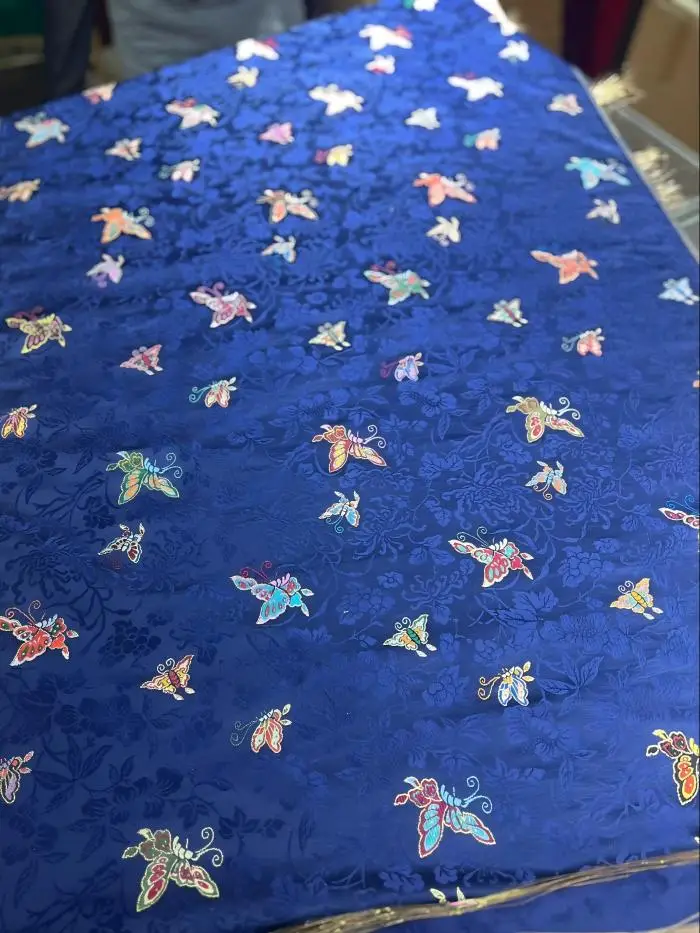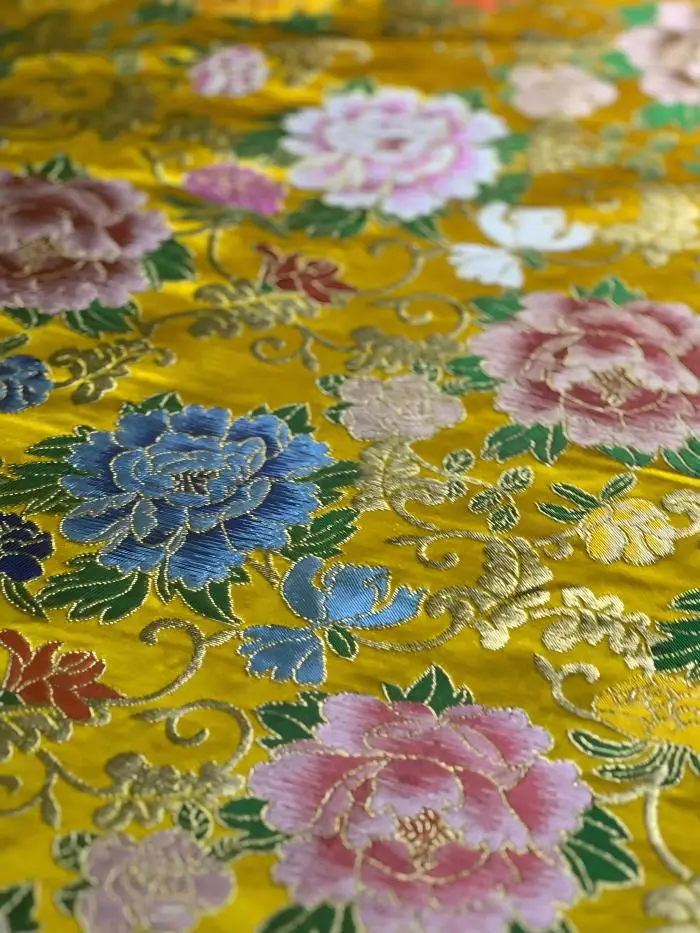
Cloud Brocade
Cloud Brocade is also known as Yunjin; it is called "every inch of silk and every inch of gold."
Cloud Brocade (Yunjin) gets its name from its vibrant colors, resembling clouds in the sky.
Cloud Brocade (Yunjin) incorporates the finest textile craftsmanship of generations, maintaining its traditional jacquard weaving technique on wooden looms. It relies on traditional hand-weaving by artisans and has not yet been replaced by modern machines.
The Nanjing Cloud Brocade (Yunjin) wooden loom weaving technique was inscribed on the United Nations Representative List of the Intangible Cultural Heritage of Humanity in September 2009.

Craftsmanship, Value and Heritage
Cloud Brocade weaving requires the collaborative efforts of a Jacquard weaver and a fabricator, requiring high technical skill and considerable operational complexity.
Cloud Brocade is a traditional jacquard silk weaving craft from Nanjing, considered one of the "three treasures" of Nanjing crafts.
On September 30, 2009, the UNESCO Intergovernmental Committee for the Safeguarding of the Intangible Cultural Heritage of Humanity inscribed the Nanjing Cloud Brocade weaving technique of China on the Representative List of the Intangible Cultural Heritage of Humanity.
Looking to buy fabric?
Customization and Innovation
Cloud brocade Historical Development
| Period | Dynasty | Key Developments & Characteristics | Significance & Legacy |
| Origins | Eastern Jin | Imperial “Brocade Office” (Jǐnshǔ) established in Jiankang (Nanjing), marking the start of official production. | Laid the institutional and technical foundation for official brocade weaving in Nanjing. |
| Development | Yuan | Establishment of “Weaving & Dyeing Bureaus” ; introduction of gold-thread weaving (Nasij). | Defined the brocade’s iconic opulent and golden style. |
| Flourishing | Ming | “Imperial Weaving & Dyeing Bureau” set up; became exclusively for imperial use; core techniques like Zhuanghua (figured satin) perfected. | Technical system matured. Nanjing became the national brocade center; a symbol of imperial power. |
| Peak | Qing | “Jiangning Weaving Bureau” at its peak, managed by the Cao family (e.g., Cao Xueqin). Scale and artistry reached their zenith. | “Jiangning Weaving” became a prestigious brand supplying the court; exerted major cultural influence. |
| Decline | Late Qing & Republic | Collapse of the dynasty; sharp decline in demand; industry dwindled, techniques endangered. | Official system dissolved, facing the crisis of being lost forever. |
| Revival | PRC Era (1949-) | Establishment of the Nanjing Yunjin Research Institute; techniques rescued and documented; artifacts replicated; new artisans trained. | Successfully inscribed as UNESCO Intangible Cultural Heritage; transitioned from emergency preservation to living传承 (chuánchéng) transmission. |
Cloud brocade Craftsmanship
The Cloud Brocade weaving process is complex and arduous, with numerous steps. Generally speaking, it consists of five major parts: designing the pattern, stitching and knotting, preparing the raw materials, building the loom, and weaving.
Compared to other brocades, Cloud Brocade is particularly unique in its loom construction. Because different types of cloud brocade require distinct weaving methods, the silk threads must be connected according to the specific ground and pattern requirements, tailored to meet specific needs.


Cloud Brocade Varieties
Cloud Brocade brocade can be broadly divided into four categories: zhuanghua, zhijin, kuduan, and kujin.
Zhuanghua: Zhuanghua is the most complex type of Yunjin brocade, characterized by rich colors and unrestricted color combinations. Some fabrics also incorporate gold thread.
Zhijin: Zhijin, also known as “kujin,” refers to fabric patterns woven entirely with gold thread. Jinzhi brocades from the Ming and Qing dynasties retain their golden brilliance even after centuries, demonstrating the authenticity of the gold used.
Kuduan: Kuduan, also known as “huaduan,” has patterns that are either visible or hidden. Visible patterns are embroidered on the surface of the garment, while hidden patterns are concealed within the garment, leaving no visible pattern.
Kujin: Its characteristic feature is the use of gold or silver threads woven onto a satin ground to create a variety of patterns. Compared to other varieties, Kujin typically uses around four colors to create decorative patterns on garments.
Cloud brocade Cultural Value
The cultural value of Yunjin brocade lies in the aesthetic concepts it expresses, which can be categorized as three types of beauty: luxurious and extravagant beauty, lyrical and elegant beauty, and joyful and ceremonial beauty.
The garments also embody the beauty of silk texture, color, and pattern, embracing people’s aesthetic appreciation and aspirations for fine art. This is the cornerstone of Yunjin brocade’s status as a world-class intangible cultural heritage of humanity.


Cloud brocade Modern Inheritance
The Nanjing Yunjin Training Base of the China Intangible Cultural Heritage Protection Center was unveiled in June 2009 at the Nanjing Yunjin Research Institute. This was the first training base established by the China Intangible Cultural Heritage Protection Center nationwide.
A mechanism for the inheritance of Nanjing Yunjin craftsmanship has been established. The Nanjing Yunjin Research Institute, as the responsible unit for the Yunjin project, has 24 recognized representative inheritors, including one national-level intangible cultural heritage inheritor, two Jiangsu provincial intangible cultural heritage inheritors, and four Nanjing municipal intangible cultural heritage inheritors.
On March 30, 2013, the Nanjing Yunjin College was established at the Suiyuan Campus of Nanjing Normal University, marking the establishment of a dedicated institution for scientific research and talent training in the transmission of Yunjin weaving techniques.
